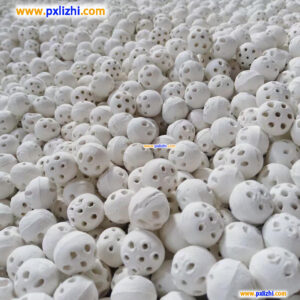
# Alumina Ceramic Ball: Properties and Applications
## Introduction to Alumina Ceramic Balls
Alumina ceramic balls are high-performance ceramic spheres made from aluminum oxide (Al2O3). These balls exhibit exceptional mechanical, thermal, and chemical properties that make them suitable for various industrial applications. With their superior hardness, wear resistance, and thermal stability, alumina ceramic balls have become essential components in many demanding environments.
## Key Properties of Alumina Ceramic Balls
### High Hardness and Wear Resistance
Alumina ceramic balls rank among the hardest materials available, second only to diamond in some cases. This exceptional hardness gives them outstanding wear resistance, making them ideal for applications involving friction and abrasion.
### Excellent Thermal Stability
These ceramic balls can withstand extreme temperatures, maintaining their structural integrity even at temperatures up to 1600°C (2912°F). Their low thermal expansion coefficient ensures dimensional stability across wide temperature ranges.
### Chemical Inertness
Alumina ceramic balls demonstrate remarkable resistance to most acids, alkalis, and organic solvents. This chemical inertness makes them suitable for use in corrosive environments where metal balls would degrade.
### Electrical Insulation
With high dielectric strength and volume resistivity, alumina ceramic balls serve as excellent electrical insulators in various electronic and electrical applications.
## Common Applications of Alumina Ceramic Balls
### Bearings and Mechanical Components
Alumina ceramic balls are widely used in high-performance bearings for applications requiring:
– High-speed operation
– Corrosion resistance
– Non-magnetic properties
– Extreme temperature conditions
### Grinding Media
In the mining and mineral processing industries, alumina ceramic balls serve as grinding media due to their:
– High density
– Wear resistance
– Chemical stability
– Contamination-free grinding
### Valve Components
The chemical and petrochemical industries utilize alumina ceramic balls in valve applications where:
– Corrosion resistance is critical
– High purity is required
– Abrasive media are present
### Electronics and Semiconductor Industry
Alumina ceramic balls find applications in electronics as:
– Insulating spacers
– High-frequency components
– Semiconductor manufacturing equipment
## Grades and Specifications
Alumina ceramic balls are available in various grades, typically classified by their alumina content:
Grade | Alumina Content (%) | Typical Applications
92% | 92 | General industrial applications
95% | 95 | Higher wear resistance requirements
99% | 99 | Ultra-high purity applications
99.5% | 99.5 | Semiconductor and extreme conditions
## Advantages Over Metal Balls
Compared to traditional metal balls, alumina ceramic balls offer several advantages:
– Longer service life in abrasive environments
– Reduced maintenance requirements
– Lighter weight for the same size
– Non-magnetic properties
– Better performance in corrosive conditions
## Manufacturing Process
The production of alumina ceramic balls involves several precise steps:
1. Raw material preparation and mixing
2. Forming through isostatic pressing or extrusion
3. High-temperature sintering
4. Precision grinding and polishing
5. Quality inspection and sorting
## Selection Considerations
When choosing alumina ceramic balls for specific applications, consider:
– Required alumina content
– Size tolerance
– Surface finish
– Operating environment
– Load and speed requirements
– Cost-effectiveness for the application
Keyword: alumina ceramic ball
## Future Trends
The demand for alumina ceramic balls continues to grow as industries seek:
– Higher performance materials
– More energy-efficient solutions
– Longer-lasting components
– Environmentally friendly alternatives to metals
With ongoing advancements in ceramic technology, we can expect to see even more innovative applications for alumina ceramic balls in the future.
